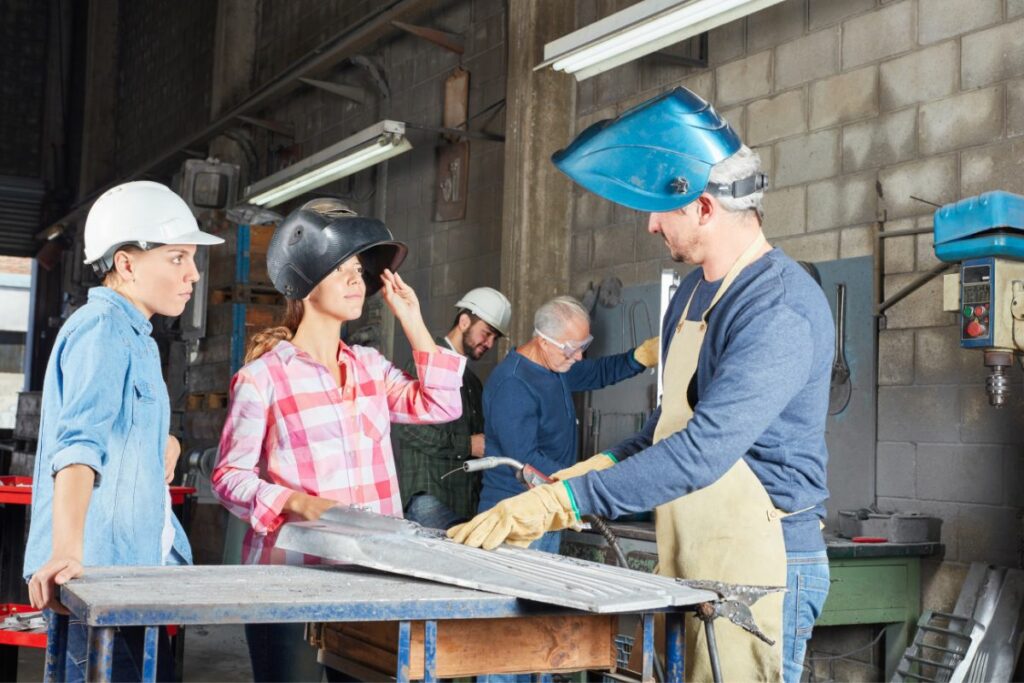
Apprenticeship is a perfect way for a new generation of welders to learn their craft while on-the-job. Not only will you get real hands-on experience under the watchful eye of a welding veteran, but you also earn a salary for the work done. A welding apprenticeship typically takes three to four years, including at least 144 hours of required classroom instruction. During this time, you can expect to learn all the necessary skills and abilities to become a professional welder yourself. These often include how to handle welding equipment in a safe manner, the correct welding techniques for every situation, how to read technical drawings and blueprints, and the characteristics of different metals.
But the first step is deciding to enrol in a welding course. Doing this helps your chances of landing an apprenticeship in a reputable company, or better yet, a job straight after your course completion. However, if you’re one among the many who had finished their course with Welding Academy and thinking of landing your apprenticeship soon, here are some key notes to get you started:
Some apprenticeship programs may require you to have taken some formal training or courses prior. That said, ensure that you have met these initial requirements and reached the qualifications so you can have full confidence before applying. Note that most programs generally look for at least a high school diploma.
Before spending a lot of time and money, it’s a good idea to first take introductory welding classes. This will teach you the basics of the profession and give you a general idea of the work involved. It will also help you weigh if being a welder is even the career path for you. You can follow these classes at a local community college, certification center, or from the comfort of your own home with an online course offered by a reputable provider.
While it may not be a requirement for most apprenticeship programs, it will look good on your resume to have earned a welding certificate. It will show you have an advanced understanding and grip of your craft. It will also certainly help your chances of finding a great apprenticeship program or a higher-paid welding job in the future.
Once you are ready to start your apprenticeship, you may find it hard to think about where to start looking. If that’s the case, you can try contacting local welding unions or visiting government websites.
But maybe you already have a list of companies to which you want to apply or maybe you got lucky and found an apprenticeship while taking welding classes. Alternatively, you can browse for welding companies in your area and call them directly. To improve your chances of finding an apprenticeship, it’s smart to apply for multiple positions and select which one fits your goals and preferences best.
Some welding apprenticeship programs may require you to take an entrance exam, proving you have at least a basic knowledge of how to weld and conduct safety procedures. It would be beneficial to have taken some previous training in preparation for a possible exam. Usually, a welding exam consists of multiple-choice questions, although this may vary depending on where you take the exam.
An apprenticeship will take you between 6,000 to 8,000 hours to complete which may sound like a lot, to begin with. But as they say, time flies when you’re having fun…and learning. So long as you enjoy the craft you want to master and have the dedication to sustain you, then doing an apprenticeship may just be the thing that launches your career as a sought-after welder in your community.